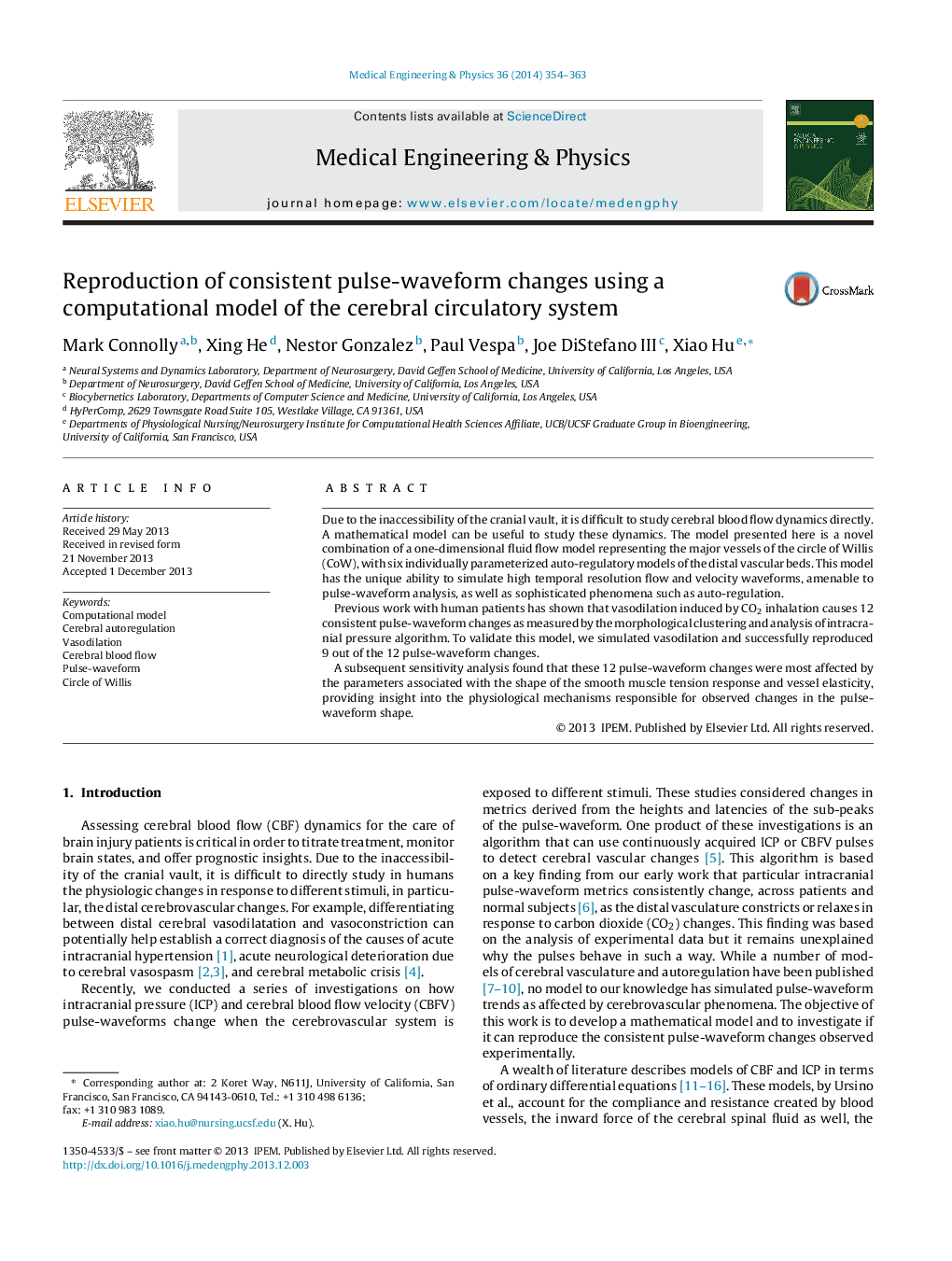| Article ID | Journal | Published Year | Pages | File Type |
|---|---|---|---|---|
| 876020 | Medical Engineering & Physics | 2014 | 10 Pages |
Due to the inaccessibility of the cranial vault, it is difficult to study cerebral blood flow dynamics directly. A mathematical model can be useful to study these dynamics. The model presented here is a novel combination of a one-dimensional fluid flow model representing the major vessels of the circle of Willis (CoW), with six individually parameterized auto-regulatory models of the distal vascular beds. This model has the unique ability to simulate high temporal resolution flow and velocity waveforms, amenable to pulse-waveform analysis, as well as sophisticated phenomena such as auto-regulation.Previous work with human patients has shown that vasodilation induced by CO2 inhalation causes 12 consistent pulse-waveform changes as measured by the morphological clustering and analysis of intracranial pressure algorithm. To validate this model, we simulated vasodilation and successfully reproduced 9 out of the 12 pulse-waveform changes.A subsequent sensitivity analysis found that these 12 pulse-waveform changes were most affected by the parameters associated with the shape of the smooth muscle tension response and vessel elasticity, providing insight into the physiological mechanisms responsible for observed changes in the pulse-waveform shape.
